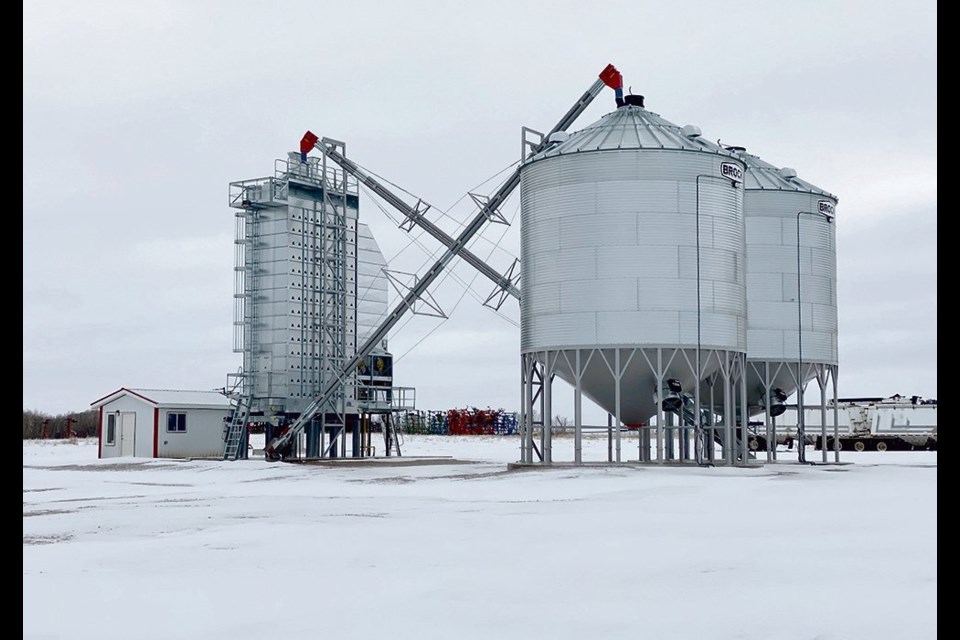WALDHEIM — About two dozen prairie farms are among 60 across Canada that have received federal funding for green technology.
They include Wendland Farms at Waldheim, Sask., featured at a news conference last week to announce the first recipients under the Agricultural Clean Technology program.
Bryce Wendland, who farms 7,000 acres with his father, said they applied for funding to install a new high efficiency grain dryer. They had an older dryer, but tougher harvests in 2018 and 2019, when there was snow in September on standing wheat, led them to consider a new one.
“We did use our old dryer and it did pull us through, but we quickly realized we were going to need something bigger, faster and just more efficient to accommodate the size of crops we were growing and the combine power we now had,” he said.
They researched options and selected a Canadian-made mixed flow dryer from Western Grain Dryer in Manitoba.
The tall dryer holds about 1,800 bushels and Wendland said the grain is in the dryer longer because it holds so much.
“This results in a slow and gentle dry so the moisture can be removed from the kernel evenly,” he said. “The other thing that happens is as the grain flows from the top to the bottom, it flows over triangle ducts… and as it flows over those ducts it’s constantly mixing and this results in there being no drying front. And because the grain is mixing there’s very few kernels that are over-dried or under drying.”
The Wendlands also decided to spend more up front and install natural gas to run the dryer rather than propane. Wendland said they knew it would cost more at first but would be cheaper in the long run and be better for the environment.
He said SaskEnergy has a calculator on its website that compares carbon dioxide emissions from the two fuels.
“I think the calculator says drying about 100,000 bu. a week at four points moisture removal will save about six to seven tonnes of carbon and that’s just burning the gas alone, let alone not having trucks on the road to truck the propane,” Wendland said.
The Wendlands received $251,000 for their project.
Agriculture minister Marie-Claude Bibeau said the 60 projects approved in the first wave of funding will receive nearly $17.9 million. The 24 on the Prairies are worth $7.6 million.
“You know that by adopting clean practices and technology you are doing what it takes to keep your land healthy, productive and efficient,” she said during the announcement.
The government plans to triple the $165-million five-year program because of the overwhelming response. About 200 applications are under evaluation.
Wendland said environmentally conscious practices have always been part of their operation, such as using sectional control on drills and recycling chemical jugs.
“We want to be mindful of the environment and we want to be stewards of the land. When it comes to grain drying, we want to be efficient and environmentally friendly at that, too,” he said.
He added it will take about 20 years to break even on the cost of installing the natural gas.
“But I’m only 33 so if I can farm until I’m 65 I’ll definitely be ahead,” he laughed.
Bibeau also said as more farmers adopt new technologies it will create a higher demand for them. She said in the last year alone the federal government has announced more than $500 million in agri-environmental programs that support farmers.

